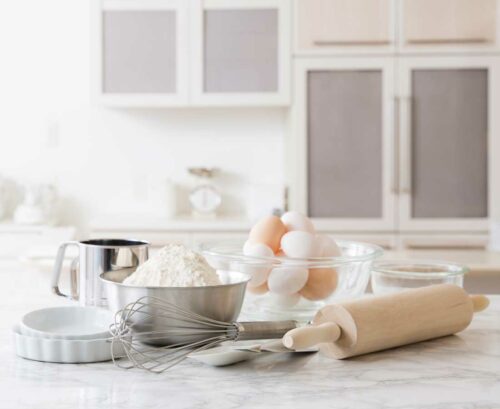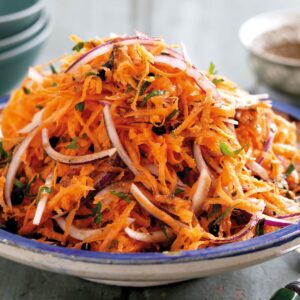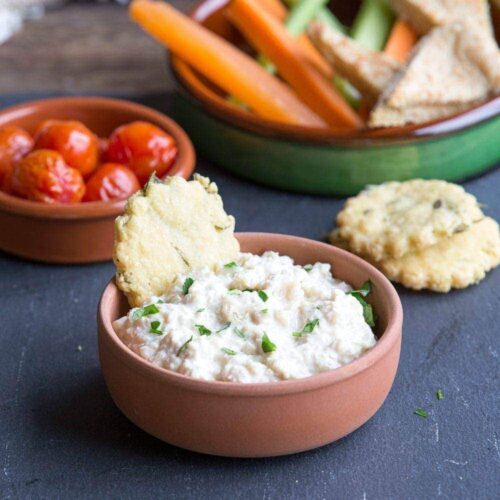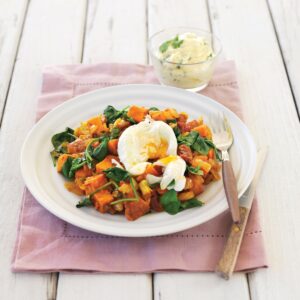
Phil Mundy is and HFG recipe consultant. He works his magic every month to cut calories, saturated fat and added sugars while making sure every recipe tastes good.
Many of us have a bit of a sweet tooth, and unless we’re near the fruit bowl that usually means reaching for something containing added sugar. Obviously, we all know sugar is best had in (serious!) moderation (ideally fewer than 6 teaspoons a day).
At Healthy Food Guide we recommend retraining your tastebuds to prefer less sweetness, and we try to keep added sugar to a minimum in our sweet recipes. Simply replacing sugar with an artificial sweetener is unlikely to help train us out of craving sweet things. But, occasionally, when sweetness is called for, using a sugar substitute can be a preferable option. Just remember, sweeteners can cause stomach upsets if we have too much at one time.
Annoyingly, most artificial sweeteners leave some sort of unwelcome aftertaste. Step forward, stevia! This sugar substitute, extracted from the leaves of a small plant native to South America, has long been used to sweeten drinks. It’s now started to make its way into the mainstream diet, being added to lots of soft drinks as a low-calorie alternative. Adding a sweetener to your brew is hardly groundbreaking, though. What I really wanted to know is can you bake with it?
Stevia comes in a few forms, including the old-fashioned sweetener tablets, a liquid form – both of which are highly concentrated – and as a baking blend. For this, it’s bulked out with natural, calorie-free ingredients as well as some standard sugar to give a similar texture to granulated sugar. I often use stevia liquid to sweeten my daily pot of 2% fat Greek yoghurt or add to a protein shake after a long session at the gym, but I hadn’t used a baking blend before.
An easy tray bake seemed the obvious test, so I opted for these crumbly bars using Truvia Baking Blend, which is made from the stevia leaf and Silver spoon sugar. This is how it adds up: 100g Truvia Baking Blend contains 200kcal (836.8kJ) but is as sweet as 200g of ordinary sugar, which has 800 kcal (3347kJ).
My verdict
With a strongly flavoured filling like raspberry, you could hardly tell it wasn’t a sugar-packed treat you were eating. I can imagine the baking blend would work really well in scones, too. I’ve used it to sweeten stewed apples, so it would be ideal for pies. When it comes to cake, they may not be quite as light as you’d normally make, and may take a bit of trial and error to get the right quantities if you’re using a favourite old recipe. If you want to cut the calories for your traybakes, though, it’s certainly worth giving stevia a whirl! Try my recipe:

Tangy raspberry-filled oat bars
Prep: 15 min
Cook: 45 min + cooling
Makes: 16 (can be frozen)
For the crust
250g porridge oats
200g plain flour
zest 2 lemons
170g low-fat spread
1tsp ground cinnamon
65g Truvia baking blend
For the filling
425g fresh (or frozen, then thawed) raspberries
65g Truvia baking blend
45g cornflour
- Heat the oven to 180°C/fan 160°C/gas 4. Line a 20-22cm square cake tin with baking parchment. Put all the crust ingredients in a large bowl and whisk with a hand whisk for 2 min until you have a crumble.
- In a separate bowl, stir together the raspberries, Truvia and cornflour until most of the raspberries are crushed.
- Spoon two-thirds of the crumble into the prepared tin and smooth with a spoon. Spread the raspberry mixture over the base. Sprinkle the remaining crumble over the top and press down lightly.
- Bake for 45–50 min until golden. Cool in the tin for 10 min before transferring to a cooling rack for 20 min. Cut into 16 squares, then leave to cool completely.
Tip
Keep in an airtight box for 2-3 days, or freeze individual bars wrapped in clingfilm. These taste great warmed up with low-fat custard, too.
Per serving:
163kcal
3.3g protein
4.7g fat
1g saturates
31g carbs
5.6g sugar
3.1g fibre
0.2g salt
40mg calcium
1.2mg iron
LOWER SUGAR
LOW SAT FAT
LOW SODIUM
VEG
www.healthyfood.com










